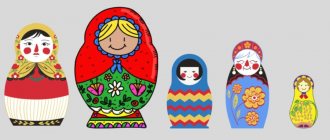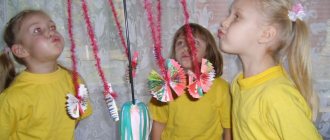Let's say a word about the necessary toys
Most educational games require certain props. These are household items, natural materials, as well as toys or sets of them. They must meet certain requirements:
- promote the development of physical skills;
- develop fine motor skills, speech, intelligence;
- reflect the child’s personal world, where he can try on a profession or social role of interest;
- develop the child’s creative potential;
- develop perseverance, diligence;
- provide an opportunity for relaxation.
It is clear that one toy will not perform all these functions. Therefore, at 2–3 years old, a child should have:
- items for physical activity (balls, gurneys, skittles, bicycles);
- sound and musical toys (drum, piano, pipe, guitar, various musical modules, “talking” books, posters, tables, talking toys and other similar toys);
- games and toys for the development of intelligence, perseverance, creativity and fine motor skills (constructors, cubes, lotto, mosaics, puzzles, nesting dolls, sorters, lacing, plasticine, pencils, paints);
- toys and sets for social and household games.
It is important to take into account that by this age children are already aware of their gender identity and develop corresponding stereotypical behavior, therefore educational sets of toys will differ depending on the gender of the child.
For girls:
- toy kitchen and utensils;
- dolls, furniture, clothes and strollers for them;
- household appliances (iron, vacuum cleaner, oven, washing machine);
- Stuffed Toys;
- "hospital" set.
For boys:
- a set of men's tools with a mini workshop;
- cars;
- pistols and machine guns;
- fortresses, soldiers;
- robots, transformers;
- transport sets (firefighter, policeman, military, ambulance);
- radio controlled toys.




